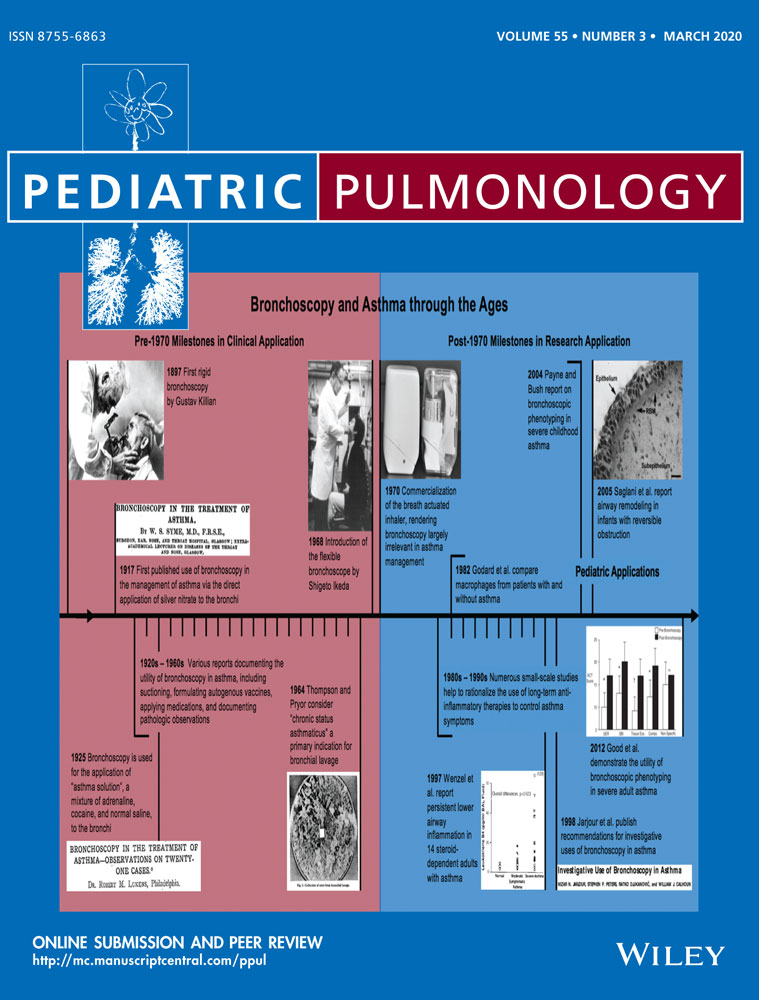Feasibility of a pediatric long-term Home Ventilation Program in Argentina: 11 years' experience
Abstract
Background
Pediatric home ventilation (HV) has increased worldwide. A Home Ventilation Program (HVP) was started in the Pulmonary Department of the “Hospital de Pediatría Prof. Dr. J. P. Garrahan,” Argentina, in 2007. This is the largest Argentine national pediatric tertiary care referral center. Limited studies on pediatric HV from Latin American countries have been published.
Objective
This study describes and analyzes the cohort of children admitted to the HVP during an 11 years period.
Methods
Longitudinal study. Population: all patients (pts) admitted to the HVP between 2007 and 2018. We analyzed demographic and clinical variables, sleep study results, ventilation setting, and start manner collected in a prospective data base.
Results
A total of 244 pts were admitted. Median age at ventilation start was 9.41 (3.47-14.08) years, 84% of pts had health insurance. The most frequent underlying diseases were neuromuscular disease (43%) and genetic syndromes (23%). Home-hospital distance was 100-500 km in 16% of cases and greater than 500 km in 34%. Seventy percent of pts had sleep studies before ventilation initiation. Ventilation was started in our general pediatric ward in 83.6%. Noninvasive ventilation was used in 86.1%. The actual number of pts still on follow up is 133 of 244 (54.5%), 16.8% dropped out, 16.4% were transitioned to adult care, 5.32% resolved their sleep-disordered breathing, and 5.32% died.
Conclusions
The HVP admitted pts from all the country. Ventilation was started on the basis of clinical and objective sleep measures. This long-term experience underlines the feasibility of a HVP in an emergent country.
CONFLICT OF INTERESTS
The authors declare that there are no conflict of interests.




